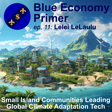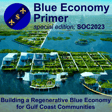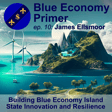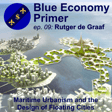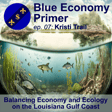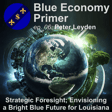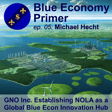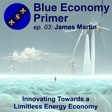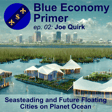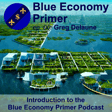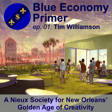
#16: How Space Technologies are Supporting Terrestrial Innovation
In this episode, we strike out into the solar system with Roberto Carlino, a NASA engineer and innovation pioneer with an eye on the space age technologies and systems that will facilitate humanities leap to a multi-planetary species.
As part of Deep Blue Institute interest and advocacy for technologies that support maritime urbanism, or floating cities, we recognize that many of the concepts and tech innovations that support extended space flight and habitation provide the proofs of concept for the solution sets that will facilitate the realization of remote ocean-based habitats serviced by off grid energy, water, and waste systems. Robert unique background and perspective gives us a glimpse into how humanity’s irrepressible drive to explore the solar system, and beyond, is fueling technology breakthroughs and innovation here on Earth.
After a week of meetings and community events in New Orleans, Roberto reflects on what he sees happening in terms of climate tech development and entrepreneurship in the region. He also helps us to contextualize the role of New Orleans’ own NASA Michoud facility in the broader context of the global space industry. There is much to celebrate.
Please visit the episode 16 webpage to find additional links, references and background information.
GUEST BIO
Roberto Carlino
NASA Ames Research Center
Software/Hardware Test Engineer and Mission Ops Lead
Roberto Carlino is an Aerospace Engineer based at NASA Ames Research Center in Silicon Valley, California, currently working on cutting-edge projects like the Astrobee free-flying robots and the Advanced Composite Solar Sail System (ACS3) cubesat. More recently, he was selected as primary crew for NASA’s Astronaut Analog mission Human Exploration Research Analog (HERA) at NASA’s Johnson Space Center in Houston, living and working as an analog astronaut for 45 days while “traveling” to the Martian moon Phobos. In 2022, Roberto was selected among the top 30 candidates for the European Space Agency (ESA) Astronaut selection out of over 22,000 applicants. Roberto began his career at NASA Ames Research Center around 9 years ago, working on small flight projects and NASA mission proposals and later working as a Software Engineer for the mission Transiting Exoplanet Survey Satellite (TESS) – follow-on mission of the Kepler Space Telescope – searching for habitable alien planets around the solar neighborhood.
Roberto earned his bachelor’s and master’s degree in aerospace engineering from the University of Naples Federico II, in Italy, and Delft University of Technology, in The Netherlands. Additionally, he holds a second master’s degree in ‘Space Systems and Orbital Platforms’ from the University of Rome, La Sapienza.
Outside of work, Roberto pursues several adventurous hobbies aligned with his passion for exploration. He is a licensed private pilot with over 150 hours of flight experience. Roberto also enjoys skydiving, scuba diving, High-Intensity Interval Training (HIIT), and hiking. Among his passions, he also loves cooking good Italian food, especially Neapolitan Pizza.
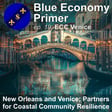
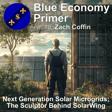
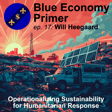
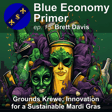
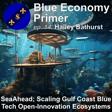
![#13 - Build [Back] Better; Tech Enabled Storm Resilient Coastal Communities image](https://media.zencastr.com/cdn-cgi/image/width=112,quality=85/image-files/63bf157c8c660743f14be65a/98cfe1b8-9955-4de4-b5df-a451e510bb82.jpg)

